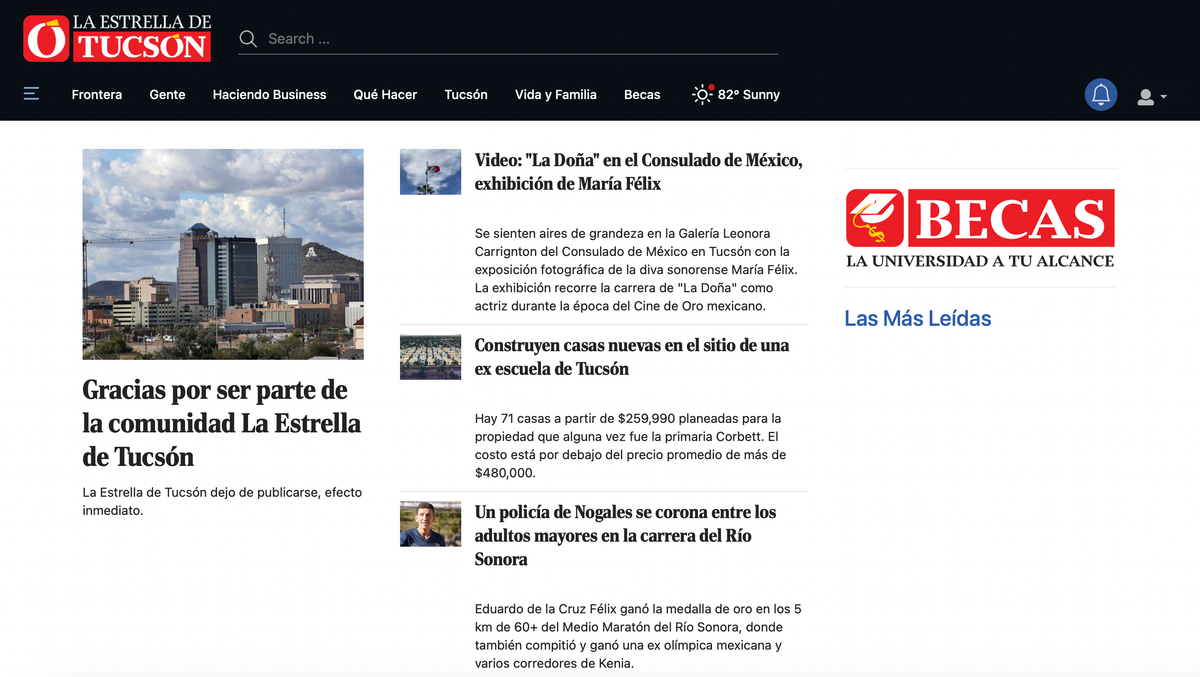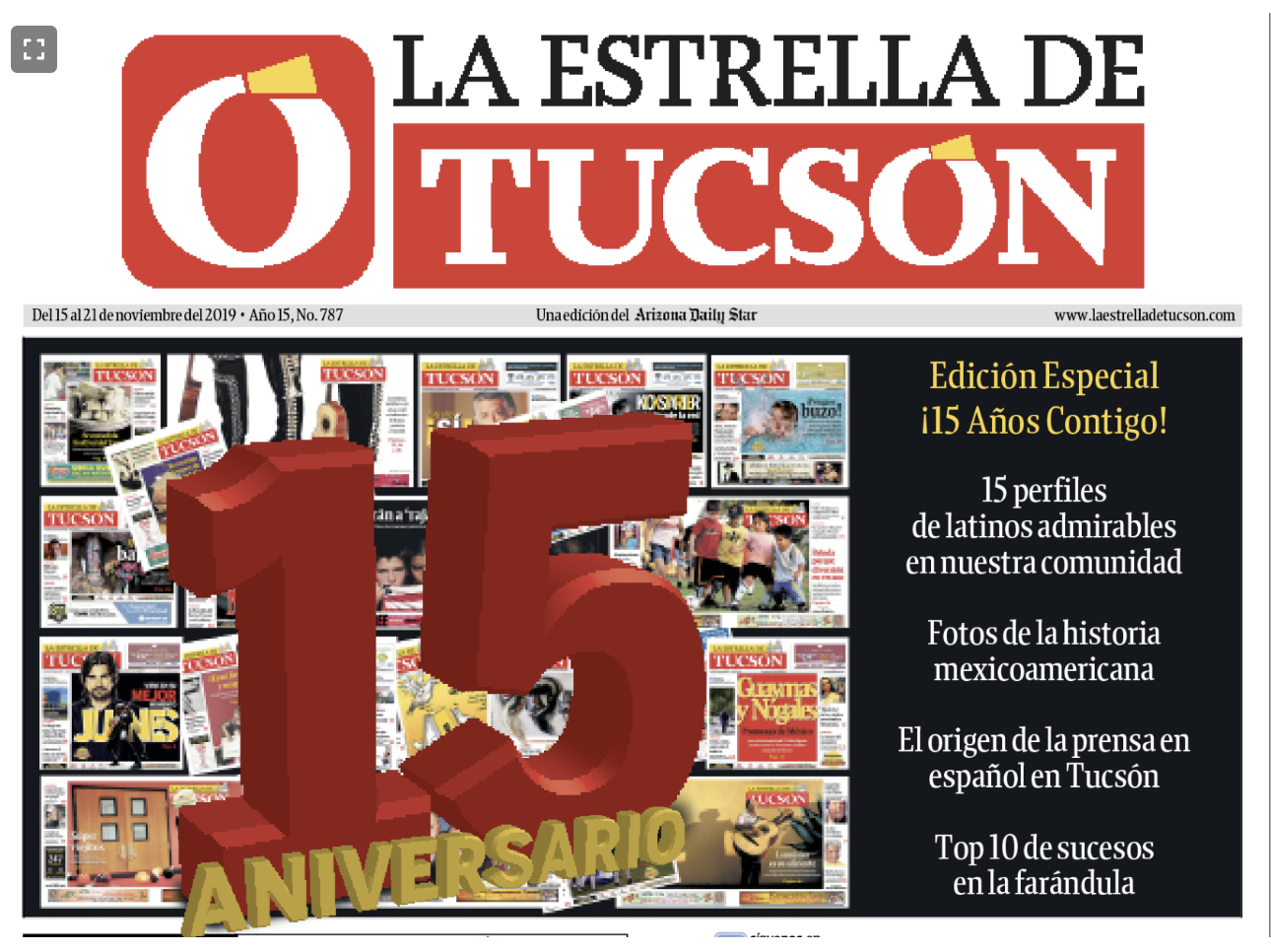La Estrella de Tucsón’s final chapter
La Estrella de Tucsón faded amid cuts and translations, leaving Tucson without Spanish-language local news.

As La Estrella de Tucsón’s newsroom shrank, the focus shifted from original reporting to translating stories from English. Staff layoffs, budget cuts and changing media habits chipped away at the paper’s ability to serve its community.
This decline mirrored broader challenges facing Spanish-language newspapers across the country, raising questions about the future of local news for Tucson’s Hispanic population.
Soon after Ernesto Portillo Jr. joined the La Estrella team in 2009, staffing cuts became routine. Advertising slowed, and newspapers began looking for ways to save money.
Liliana Lopez Ruelas was working as a copy editor under Portillo Jr. when she witnessed her first major round of layoffs, just a few months into her time at the paper.
She noticed that while people were laid off or left for other jobs, their positions were no longer being filled. Team members began taking on more responsibilities. When she was promoted to full time, she wasn’t just a copy editor — she was also a reporter and translator.
Increasingly, stories published in La Estrella were translations of articles originally written in English. Fewer were reported and written in Spanish from the start.
In 2019, Portillo took a buyout and left, calling the newspaper a “shadow of itself.”
Once a full-fledged Spanish-language newsroom deeply embedded in Tucson’s Hispanic community, La Estrella de Tucsón gradually lost its footing.

As cuts deepened and original Spanish reporting faded, what remained was a shadow of the paper's original vision, leaving behind a community still in need of trusted, local news in its own language.
After Portillo’s departure, Lopez Ruelas was left as its only full-time employee until its sister publication, the Arizona Daily Star, hired Claudia Bungard as a digital producer in 2021.
Bungard left a year later to return to her home country of Colombia.
“We were a little bit forgotten,” Lopez Ruelas said. “There was a lack of vision and sensitivity, and it was a constant struggle.”
Then, like relief from a monsoon rain, she was given permission to create a full-time position at La Estrella. Lopez Ruelas decided to split the position into two part-time jobs, hiring Sofia Moraga and Susan Barnett.
Moraga and Barnett produced original content for La Estrella but spent considerable time translating articles.
Moraga worked closely with Lopez Ruelas on a WhatsApp newsletter that sent out five news stories and five events weekly, along with an audio version.
Barnett worked 10 hours a week, mainly translating articles and often working off the clock to complete original content.
La Estrella “had an impact on the community, it was connected to the community, but I do think we were losing that connection in part as a result or consequence of all the changes,” Lopez Ruelas said. “It's a consequence of the financial adjustments, but I'd also like to be self-critical and say that perhaps we needed to give up other things and get out on the streets more.”
April 25, 202 marked La Estrella’s final day. Early that morning, Lopez Ruelas received a call from an out-of-state phone number.
“They told me, ‘Turn off your computer right now, and whatever you’re doing, leave it as it was.’ And when I asked what would happen to La Estrella, they told me they couldn’t give me any information,” she said.

Lopez Ruelas immediately called the rest of the team, knowing that if La Estrella’s editor was being laid off, the rest of the team would follow.
She was right.
Barnett and Moraga received calls shortly after, marking the end of La Estrella de Tucsón, the last remaining Spanish-language newspaper in the city.
In the months leading up to its closure, La Estrella launched new initiatives like the WhatsApp chat, a novel approach in the industry at the time, which saw great success.
The team also conducted a distribution study to identify the most strategic locations for newspaper stands. Additionally, they were preparing to launch “Tucsóneando,” a new series highlighting Tucson spots to expand the Latino community’s knowledge of the city.
La Estrella was working toward revamping distribution and the way news was delivered, and Lopez Ruelas had been meeting with community members and adapting to technological changes.
Before Lopez Ruelas logged out of her computer for the last time, she published one final post, saying goodbye to La Estrella’s readers.
More than two years later, La Estrella’s homepage still displays that note as the final message ever published on the site.
“It was very disappointing,” Lopez Ruelas said. “It's a very strange thing, because I didn't expect it, but at the same time, it was on all of our minds. We were talking about it among my colleagues, and I wanted to believe that the closing of La Estrella wouldn't be like this, but it was. It was very sad.”
Susan Barnett is Deputy Editor of Tucson Spotlight and a University of Arizona alum. Contact her at susan@tucsonspotlight.org.
Tucson Spotlight is a community-based newsroom that provides paid opportunities for students and rising journalists in Southern Arizona. Please consider supporting our work with a tax-deductible donation.



